We talk candidly about the state of drifting in New Zealand with D1NZ managing director Brendon White, and consider the future of the national series and where it’ll head in the near future
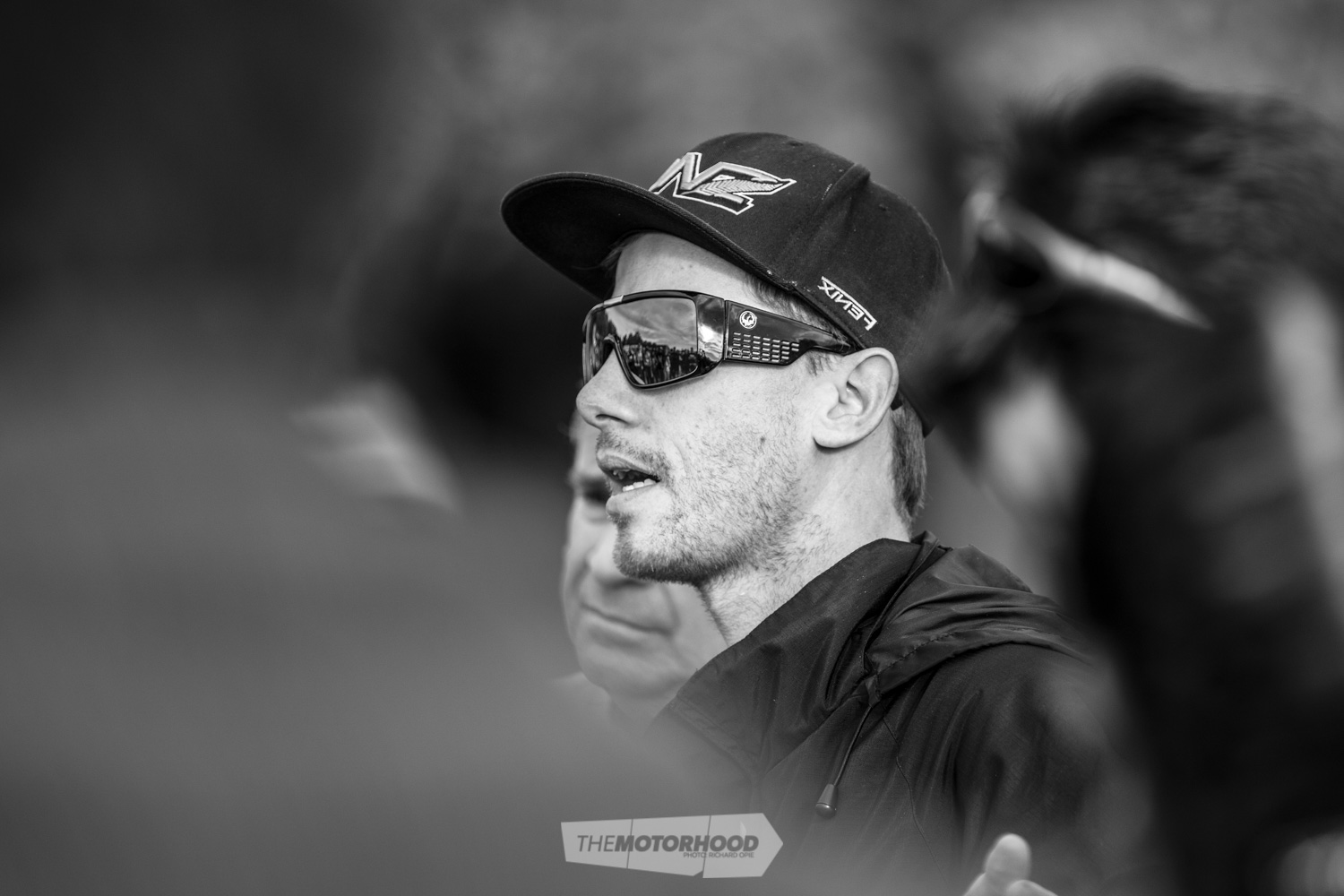
NZ Performance Car: Hi Brendon, let’s get to it. You stepped into the management of D1NZ a decade ago — how did that come about, and what sort of state was the series in?
Brendon: Ten years ago, I was engulfed in running the Minitruck and Lowrider Nationals with a chap named BK. It was a collaboration we ran with Darren Baker, who ran 4&Rotary at the time. When the nationals was sold, it was to be included in that sale, so we decided to part ways and started our own show called ‘MVP’. Alongside that, we started a magazine [MVP] and an off-the-cuff TV show, which aired on Prime, called MVP Cartel. Through producing that, we met James Muh, who had taken over running D1NZ. The series was definitely in a period where it didn’t have its own feet and didn’t really know where it wanted to go. Being that we were young and raw and didn’t really know where we were heading, we teamed up with James. We started running both MVP and D1NZ and we certainly found ourselves chucked in the deep end something chronic. Around a year later, James stepped aside to focus on his main importing business, so we brought back Justin Rood and Craig Palmer to help us run things for a year until we could get on our own feet, then they stepped back and that’s when I took over the full-time running of the series.
The series has just completed its 14th season and looks, from the outside, to be in a pretty strong place. What would you say the current state of our national championship is?
Motorsport at a grass-roots level in New Zealand is thriving. At the top level, D1NZ is now at the point where change is inevitable. For the past 10 years, we’ve pushed the boundaries unlike any other mainstream motorsport in New Zealand. We’ve run street courses and built custom rounds in carparks and stadiums. We’ve had so many trials and errors over the last 10 years and now know we are at that point where the sport’s at a pinnacle and can either go one of two ways. It’s going to be up to the people involved — the commercial partners, the sponsors, the drivers, and all the others that make the sport happen. So, it’s in a reputable state from a public perception, and this season was really positive to us, but, at the same time, we have to look forward to the next 10 years of the sport with the lessons gained.
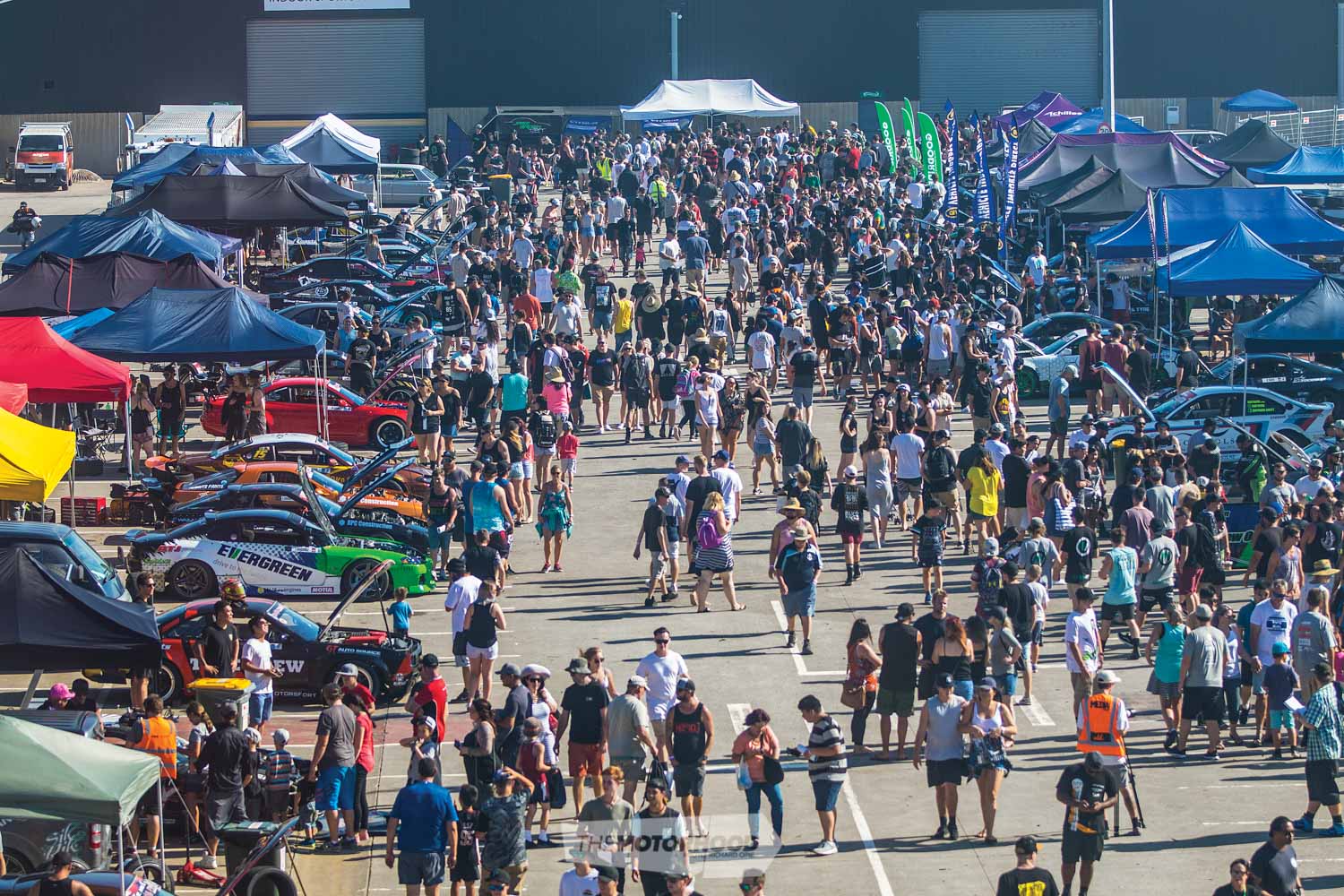
Motorsport in New Zealand has seen a terrible amount of internal turmoil of late, and the results have been disastrous for traditional motorsport here. Thankfully, drifting seems to have avoided such things, but only narrowly. Do you think this has helped drifting’s rise in popularity?
To be frank, we have always been heavily involved with motorsport — engulfed in it, you could say. I made a conscious decision not to meddle or get involved in the politics of motorsport, and [I] don’t want drifting brought into it. We have had countless opportunities to join forces with categories over the years, but we have also seen drifting as being its own show. We stayed out of the domestic affairs and created our own destiny. I’ve always put the series first over anyone else’s, or my own, agenda and I definitely think the governing body should have stepped out a long time ago and, potentially, [been more transparent] …, to show their goals and what goes on behind closed doors. What I feel happened in those other series was they … focused on the best interest of select groups or people and not [on] what’s best for their series’ and drivers’ future. As a group, D1NZ have continually made the investment back into the series, now having the longest continuous running TV show on TV3 because we busted our arses to do so, and it’s humbling [that] TV3 recognize[s] D1 as the best locally produced motorsport show in New Zealand. It’s grown astronomically, and we are now broadcast into over 34 million homes globally. As a team, we have bankrolled to put the live stream on the big screens and online, which saw an outrageous 244,000 live viewers [for] … one event at its peak this season, plus all the other stuff the fans can appreciate. No other motorsport in New Zealand does that, and until they step their game up and put on a show, they are going to keep circling. It’s something we realized a very long time ago.
This year, D1NZ built two of the most complex custom venues we have seen to date. Do you see this type of track as being the future for the sport?
For us, it’s not the first time we have done anything like this. If you look back over the past 10 years, [the venues] … have just gotten bigger. We’ve built tracks at Mystery Creek, Whangarei, Mount Smart, and Baypark, among others. For us as a sport, we’re focusing on shaping the future. Speedway hit the nail on the head 40 years ago and all got together to build venues. Drifting is the biggest motorsport in New Zealand, yet has no dedicated venues for pro-level competition. Put it this way: we will never build a track and rip it up again out of the series’ back pocket. We’re currently talking with councils about building permanent tracks. So, we just need to be wise with the money that the series is making and … spending. We are currently in talks with the Tauranga council to permanently seal the centre of Baypark, and they are very open to the idea. And we’re also talking to other major centres that have never seen the sport that provides stable growth for mainstream motorsport overall in New Zealand.
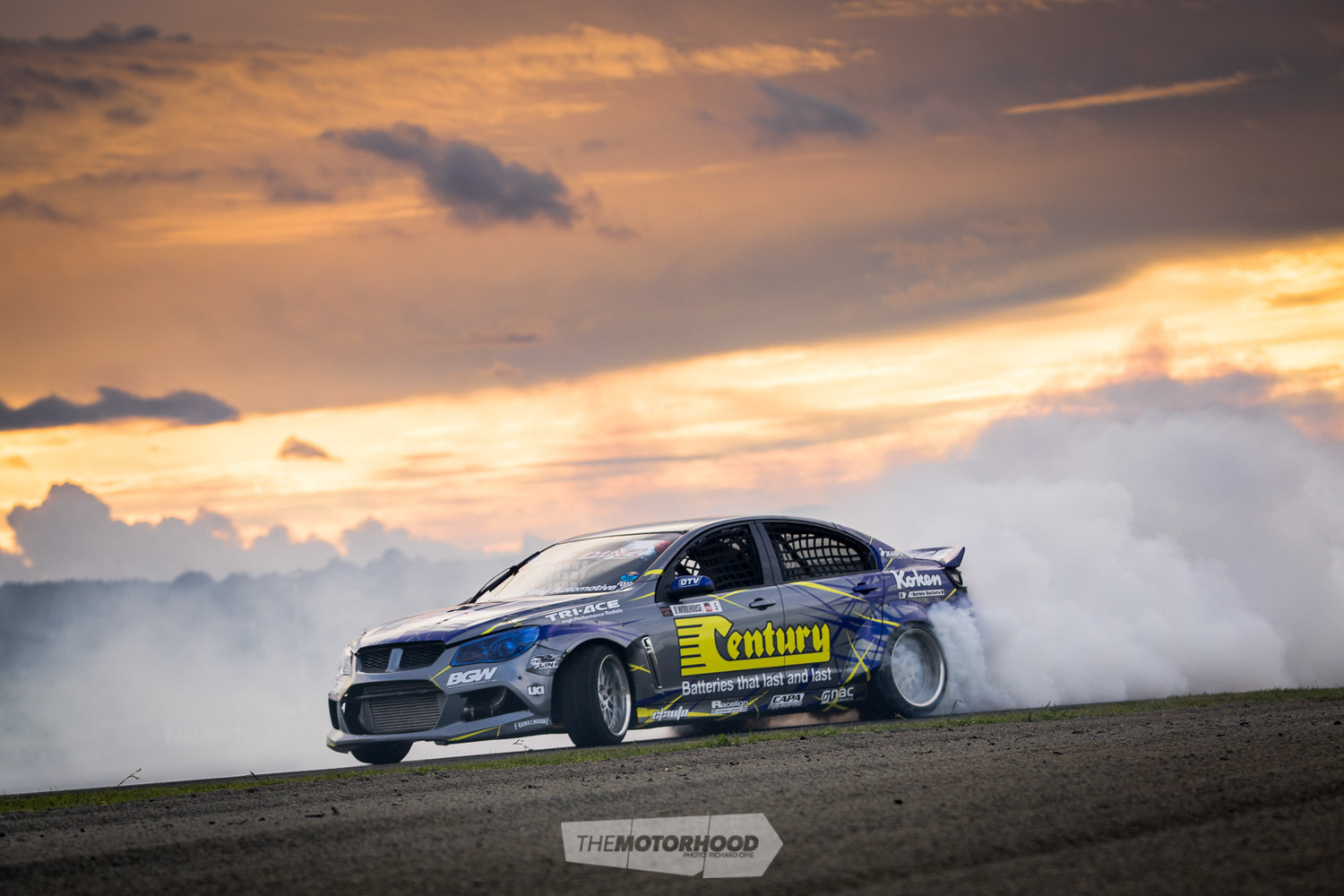
Are we looking at a future D1 championship that doesn’t attend any of the traditional race tracks?
No, not at all. As organizers, we need to put ourselves in a driver’s shoes, and they certainly don’t want five or six concrete rounds. We can’t forget the roots and where we have come from. D1NZ has been loyal to tracks, and we don’t want to lose those relationships, but some venues simply don’t draw the big crowds, and we need to continue to attract existing and new fans, so [that] our drivers can get investment and return for their partners. We are talking to some facilities about making changes to their tracks, and, if they adopt those changes, it’s going to be better for everyone as far as the show goes. If you look at Road Atlanta in America …: they built a horseshoe on one corner for Formula D, and it created a great drifting environment. We have also been looking at many opportunities [for] … the future, such as unique hill-climb events. Overall, we just have to think about the long-term rather than just running the series as is and hoping that things are going to be different and more fans are going to come because we chuck more advertising in a particular area. You also have to constantly adapt and work on perfecting the show. So, yes, we will always be at tracks, but exactly which ones remain viable will come back to how we can work together with those facilities in the future.
So, financially, where is all the investment required to build entire facilities going to come from?
We’re already spending the current income to put on shows like Dunedin and Baypark. When we first went to Baypark, we had 4000 seats available to us for free; last time before we moved into the stadium, it was 700 seats at $20 a pop. It’s all this stuff that people don’t see: the week-long pack-ins and pack-outs, the $30K to remove the rubber, the $5K to repaint the lines. When we first went there, we removed 50 tonnes of concrete and reshaped the surface so it was even usable.
We have had long-term commitments with many regions, so, now, what we’re really doing is going back to these regions and saying we’re not just bringing in one event; we’re planning a greater return for the region. That, in turn, becomes a lot of outsourced funding, different people, companies, and organizations that want to be involved so [that] they can host their own events. I have started lining up promoters and manufacturers that want things in those regions. But, yes, you’re not talking minor funds or overnight results in change. The series is about to undergo a drastic change in ownership and structure, with most of the first announcements pinned for July’s CRC Speedshow. It’s time to grow our family and grow our support network to ensure that can happen for everyone in the car community.
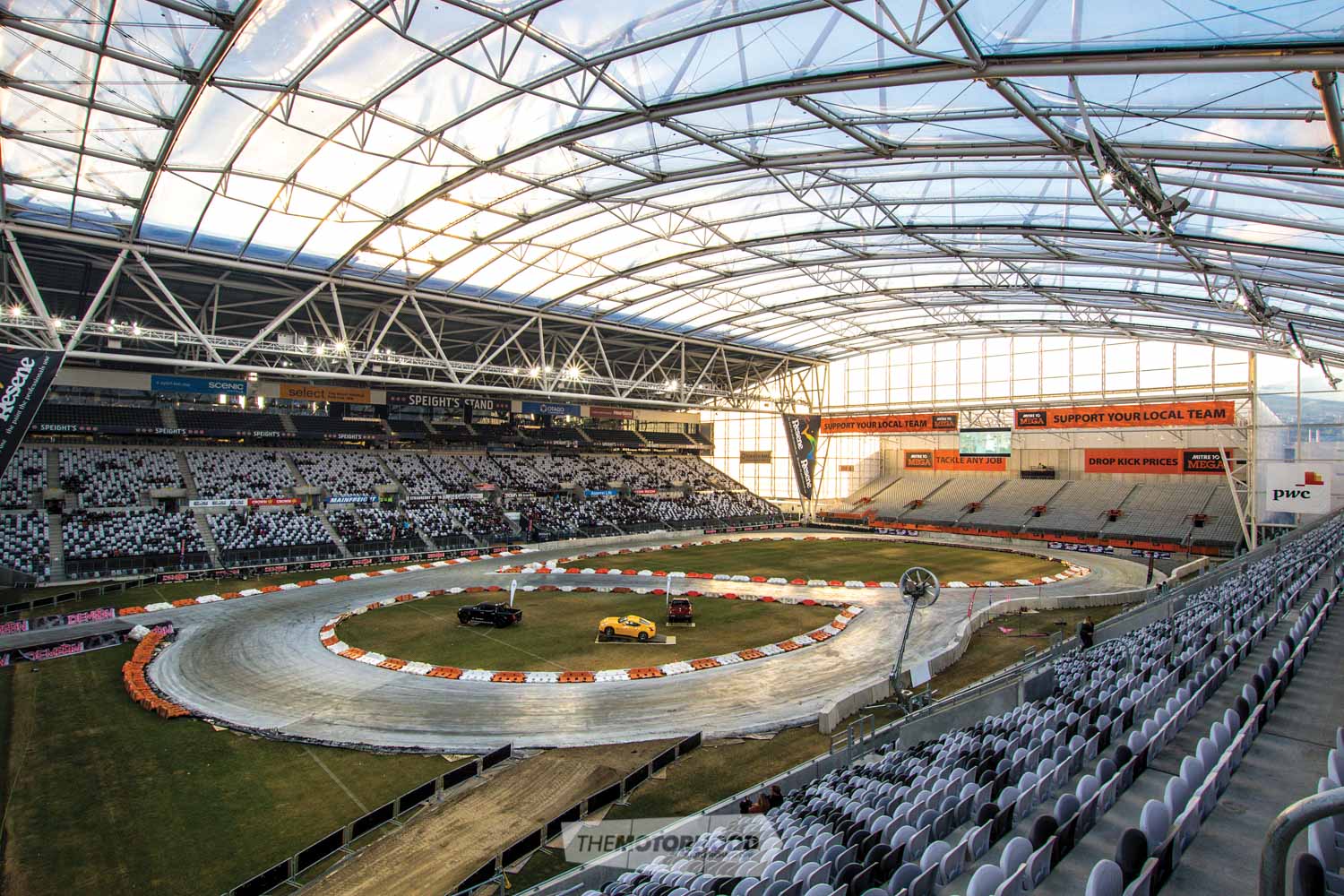
What are we talking here — are you going to be stepping down as the managing director?
I’ve owned the series for the past 10 years, and I’m pretty proud of where I’ve got it to with our team. But it’s a major beast; it takes millions of dollars just to operate and I’m no millionaire. Without a doubt, I think I’ve led the series to some real good positives. We have stable TV, and we had the biggest live stream of any sport in New Zealand this year. But what I have also done is realized that there are also things in the current series that don’t work. I have a vision, and we’ve brought together all of the past champions of D1NZ to share it with them, and they are very supportive of this vision and the direction for the next two to five years. You’re going to see all of those drivers come back into the sport, maybe not as drivers, but they will be involved in the implementation of the plan. At the end of the day, someone needs to be the leader, but it’s not so much about being the leader as being someone who won’t give up. I could have thrown in the towel years ago and someone may have filled those boots, but we have the vision for where we want drifting in New Zealand to be, and someone has to sit there day-in, day-out and work their arse off to get drifting to that point, and while creating more leaders alongside them. If I step down, someone else has to have the same, if not more, passion, and those people are not easy to come by. To set the series up, we are growing that support network; we are listening, building the capital and buying power to really get to that next step, and it’s not solved by one person.
Do you see all of the drivers buying into this new arena of super-professional drifting?
D1NZ has been around a very long time now, to the point that people know exactly what to expect when they arrive to compete. These guys work day-in, day-out to become a D1NZ driver. To the point I feel obliged to these guys to make this happen, and I share the same passion. Everyone that I have spoken to understands that a change is needed. The drivers won’t be forced to be a part of it, but they do seem very supportive of what we’re trying to achieve, and change is good. It gives the drivers a bigger voice and a better return for their drifting. Next season, we already have 55 names down for Pro-Sport and only 40 spots — there definitely is a strong future, one [that] the drivers and series are now trying to shape, so [that] the championship is giving back to drifting as a whole, building facilities that will benefit everyone in the sport. If you come to support D1NZ, you’re helping put money in the kitty to build more facilities and a stronger solidified future.
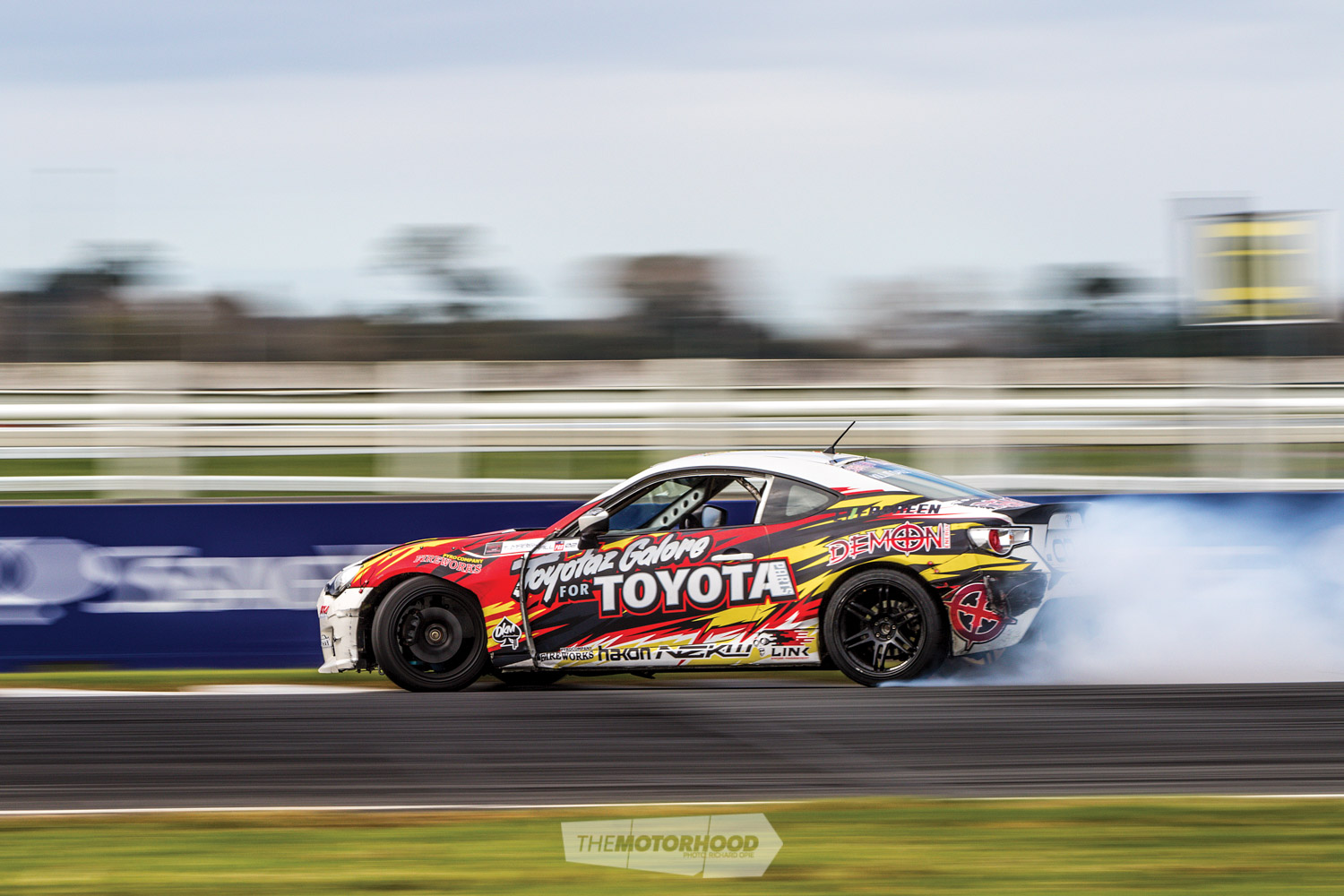
How much are you and the team looking outwards, looking overseas to other series, to make sure D1NZ is keeping up with what they are doing? And is there a one-size-fits-all formula, or are we unique here in New Zealand?
When you look at all these major players around the world, Irish Drifting Championship [IDC], Drift All Stars, Formula D[rift], etc., of course we’re watching their live streams assessing what they are doing, and it’s clear [that] there are global trends forming in the sport. But I don’t want D1 to follow suit word for word; we want D1 to be a leader. How many series have you seen build one-off custom tracks like we did in Dunedin or Baypark? We were the first in the southern hemisphere, and, while it’s a risk, it’s healthy to be unique. For D1NZ to keep growing and keep pushing, we want to continue filling stadiums. The restructure of the sport will see other elements added to the show. We want to cater for a family, but, come the main event at 7pm on the Saturday night, you’re going to get your fix of hard-core drift entertainment action.
So, you will be working to streamline the drift format as much as possible?
Very much so. It’s something we trialled at Baypark by starting the main event at 6.30pm. Sure, you’re going to have those die-hard motorsport and drift fans who are going to come for the entire event, but then you also have the families who want to come watch a three- to four-hour show and understand what’s going on. We are looking at things like introducing a five-minute box out on the track that will have everything a team will need to repair a car in that five-minute [period] … right there, in front of the crowd, with cameras all over it as the show continues. We’re also working towards a fine line with the judging, where the drivers are happy and the show still flows. With all the replays and slow-mos that are available to the judges, it’s hurting the flow of the event, as we can’t release another battle while they are reviewing all the angles — that’s the judge’s job, but it creates a lot of dead track time, so it’s also something under review.
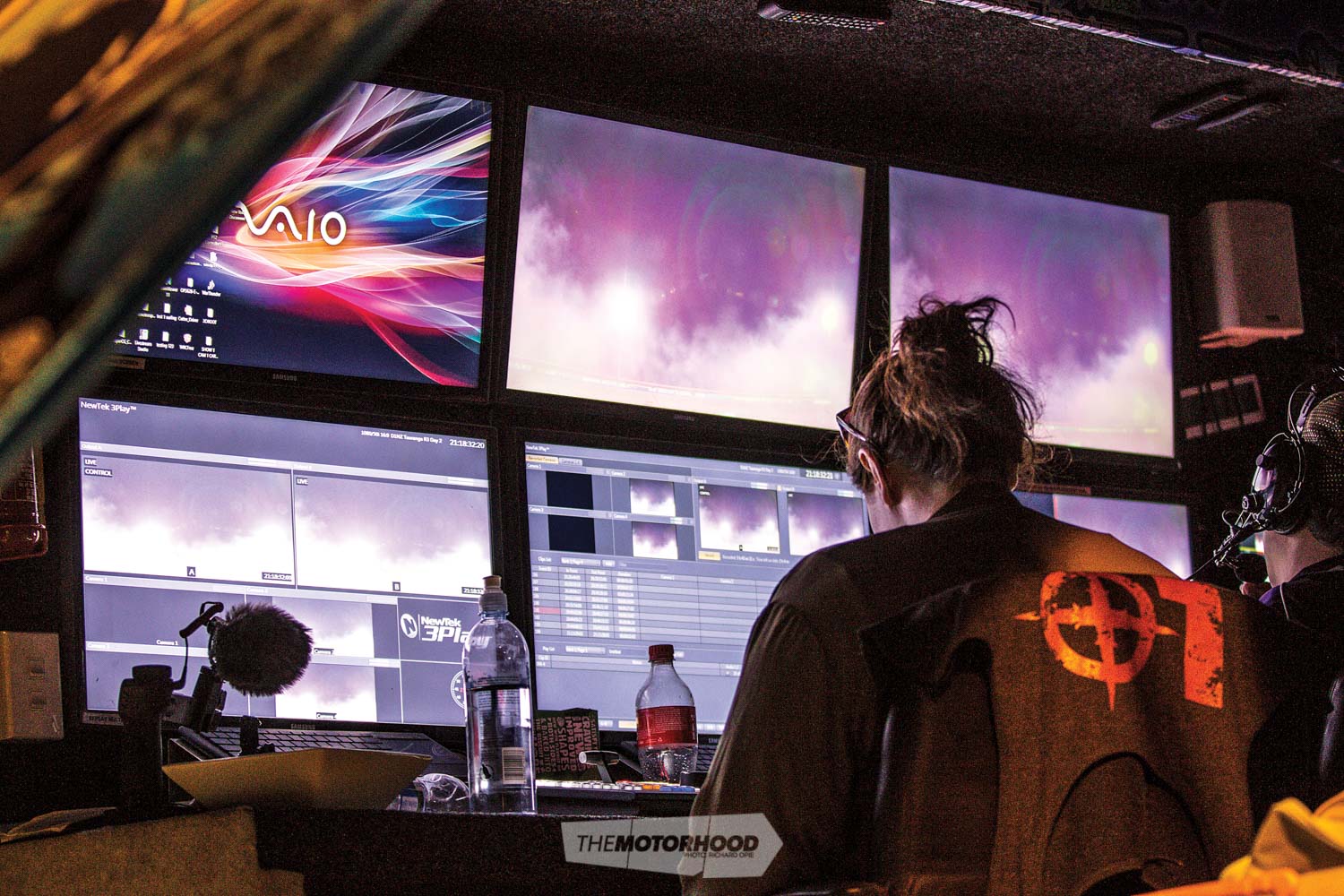
The spin-off of having a live stream is the fourth judge (the viewer) entering the frame, something that most series are struggling with. How is D1NZ planning to deal with this online kickback on calls?
It’s the power of social media, where a 13-year-old who doesn’t really understand it can have their say and thousands see it. It’s something that we’ll just have to live with. What we are seeing at a pro level is battles being won or lost in the smoke, and that’s not my cup of tea. On the technical side of things, there are some big developments happening that may lead to judges becoming obsolete. There are sophisticated programmes that can be programmed with clipping points, expected speeds, G-forces for switches — everything that makes up a perfect run. Computers will soon be able to dissect and spit out results. For example, if you’re consistently running 180kph into a corner and then go 140kph, the computer is going to know and fire an alarm back to the tower. Some big things are currently being trialled in Europe, and we’re talking to local manufacturers. I will put my hand up and say that, within two to five years, there will be computers used in the judging of the sport, replacing some, if not all, judges.
For us to be able to take that data and manipulate them into something black and white, [then] insert that into the TV and live stream, where it also needs to be, will stop a lot of that criticism and confusion in the sport. I think it’s one of the natural steps [that] the sport needs to take in order to progress, along with creating a live stream that doesn’t confuse or jeopardize the future of the sport.
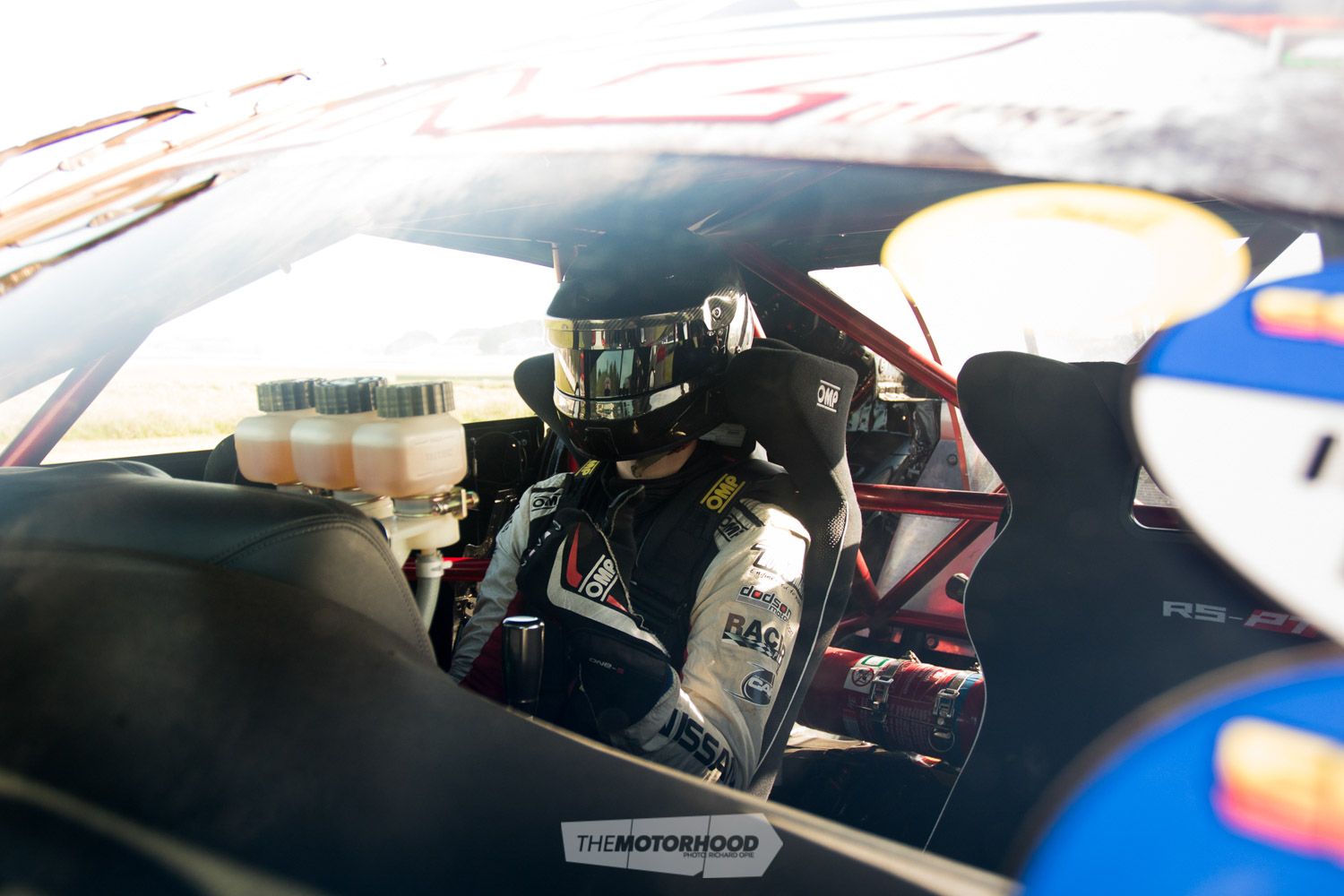
What are some of the rules we are likely to see changed for this coming season?
We want to make the series as ambitious and attractive as possible, but it’s not a straightforward process with MSNZ [MotorSport New Zealand] not allowing things like wastegates out the bonnet, which most series around the world allow. The process we have to go through to get aspects of the sport like that legal is challenging. It’s aspects like this that we are weighing up the pros and cons [of] being involved [in] and if it’s something drifting needs to [be able to] stand on its own feet with in future years. As far as these aspects and rule changes go, we want to focus on the event management and allow the drivers and the past champions to have the biggest say on the direction of the rules. There could be a huge shake up and, yeah, some might not be happy with it, but, overall, 80–90 brains working on what’s best for the sport is the way forward; they are the ones vested, and we listen. On that note, we don’t want the pros to change from being able to build the wildest, most powerful cars in motorsport. That’s what drifting is about it; that’s why it’s so attractive — all the individual styles and cars, with some you like and some you don’t. But we are all looking at certain class aspects like control tyres and control-tyre brands. Another idea that’s been floated is going back to a street tread-wear in the Pro class. But, there is a big power battle in drifting, and it comes back to understanding if we need it for the sport or if we can we go back to, say, five years ago, where we still had super-close battles, much lower power, and bigger grip levels. Again, they are all positive discussions; I’m not saying it will or won’t happen, but it’s healthy discussion among drivers.
The Pro-Sport field is hugely popular, with more drivers than spots — will we see the loophole closed that allows drivers to run in both fields like we saw this season?
The general consensus is you choose one or the other; hey, it was cool that people could get the extra track time this season, but it will be closed up. But, if any top drivers, even past champions, want to come back and run Pro-Sport, they [will be] … allowed to. The pointy end of that field really loved having experienced competition to run up against. It helps them progress as drivers. Kyle Jackways is a prime example of that. Him stepping back to Pro-Sport gave him his love for the sport back. It’s not that it’s a shitter class by any means — just look at some of the talent in there, kids like Cody P-B [Pullen-Burry]: that kid can pedal man, better than some of the pros. It’s a feeder series, but, at the same time, it’s a class of its own. We are looking at the feasibility to bring in a winter class — much like 2KCUP. We’re not saying [that] we are going to start an entire new series; it might be that a round runs alongside 2KCUP, or other events like Matsuri. We’re not opposed to working with any promoter, and this new structure will open this door. Running things like 215 tyres, stock-capacity engines — just a real budget class that will ensure you’re not facing, say, Pro competitors in their 1000hp 2JZ.
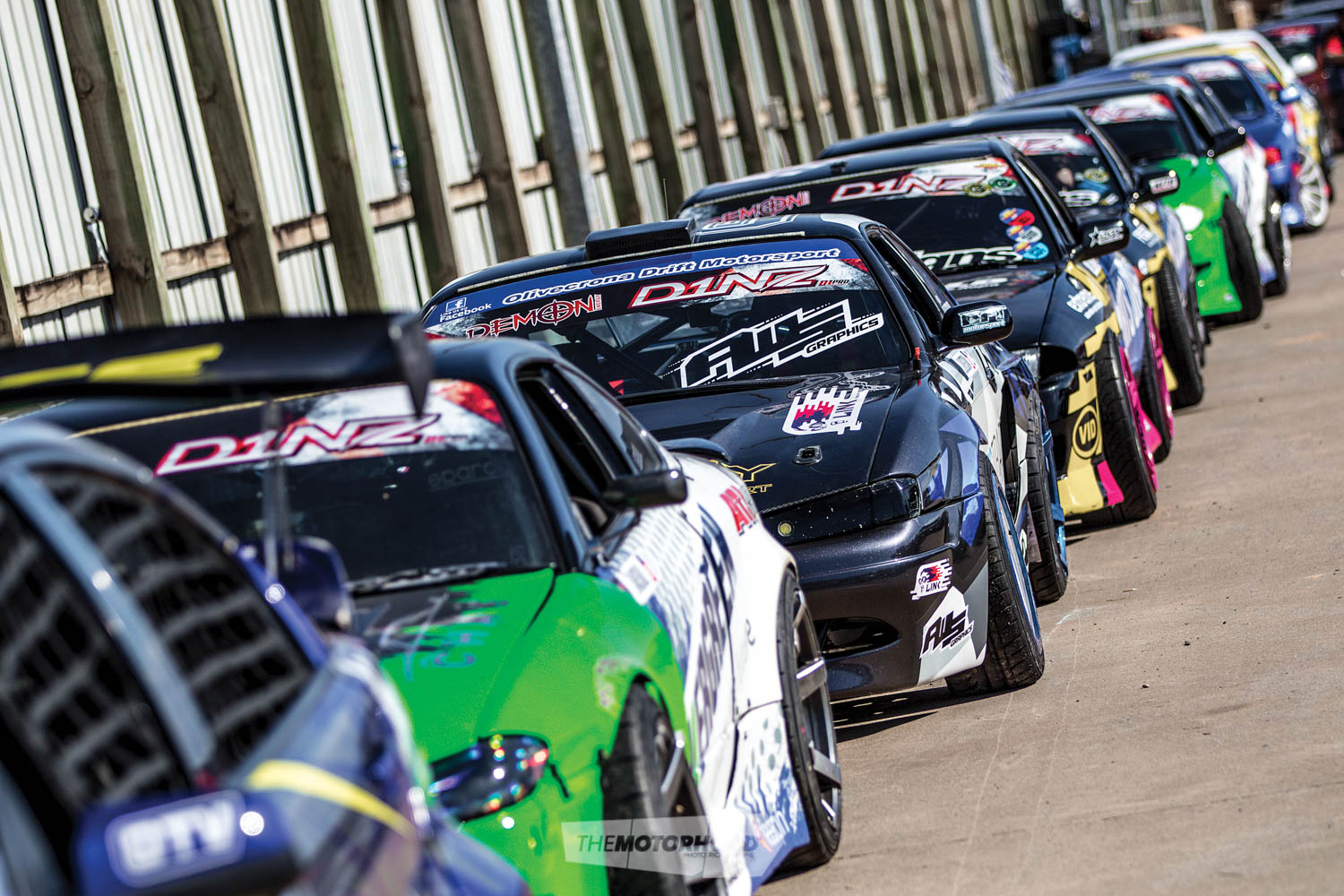
So, it’s safe to say that things are about to get very interesting surrounding drifting in New Zealand?
Yes, but the main point is building a solid future for the sport. We want it to have a unbreakable platform that’s not reliant on one person or team. It needs to be something that can’t be broken. That’s our goal. We have a great opportunity to really push forward and do something with action motorsports that just hasn’t been done before globally. If we all pull together, we can achieve it. There is a massive change coming, and we’re chucking it out there to anyone that wants to be involved. Let’s do this — let’s flip it on its lid like it was 10 years ago.
If you’re a brand or driver wanting to be involved, flick us a message on info@d1nz.com.




